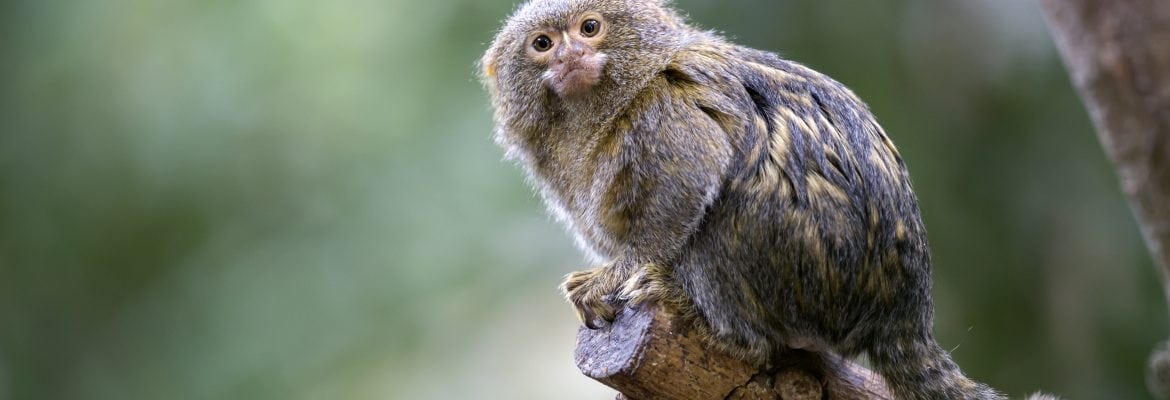
Pygmy marmoset
Conservation status: IUCN – LC (Least concern); CITES – Appendix II
Geographic range: Bolivia, Brazil, Colombia, Peru. Habitat continues along Amazon Basin.
Physical description: Pygmy marmosets are the smallest monkeys in South America. Their bodies only reach a length of 12-15cm and they rarely weigh more than 130g. Their brown coat is marked with black stripes and spots and their 15-20cm tail is decorated with black circular rings. Their face usually has some white fur around their eyes, nose, and mouth and they are adapted for life in the trees. Their sharp nails help them hold onto branches and their tail helps them balance and control their motion.
Biology: Pygmy marmosets live in small groups of 5-9 individuals consisting of one dominant couple and their offspring. The dominant female is the only breeding female and gives birth to 2 offspring per pregnancy. The whole group takes care of and nurses the young and they communicate via visual cues, scents, and vocalizations (about 15 distinctive sounds). They use their scent glands to mark territories of up to half a hectare and land on the ground very rarely and only to hunt.
Lifespan: 15-20 years.
Food habits: Feed mostly on gum, sap, resin, and other exudates from trees. Pygmy marmosets are also known to consume some fruit, flowers, seeds and insects.